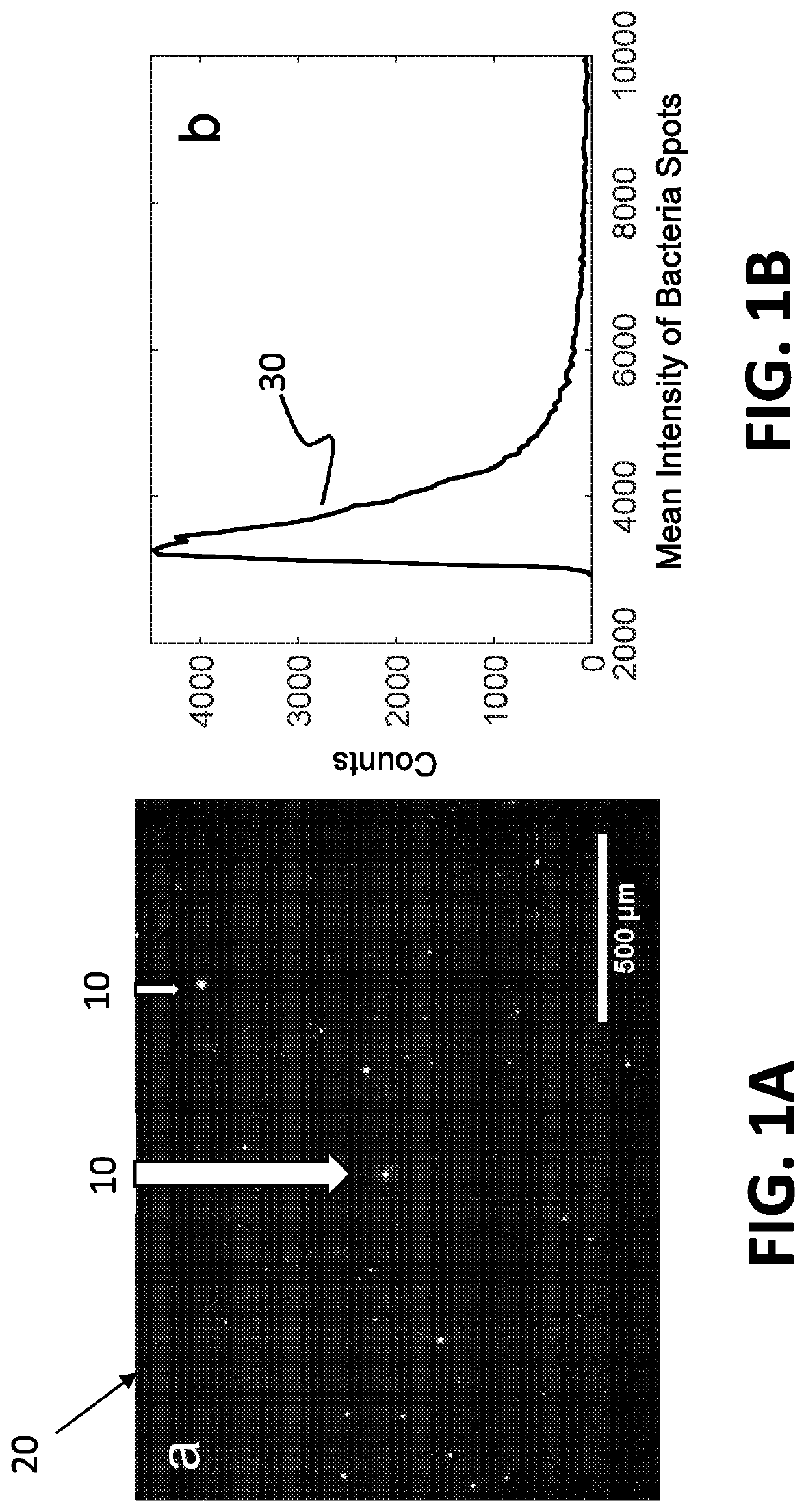Fast bacteria detection and antibiotic susceptibility test by precision tracking of bacterial cells
a technology of bacterial cell and detection method, which is applied in the field of fast bacteria detection, identification (id) and antibiotic susceptibility testing (ast), can solve the problems of one to examine, large optical microscope, large sample preparation time, etc., and achieves the effect of maximal phenotypic feature extraction and minimal sample preparation
- Summary
- Abstract
- Description
- Claims
- Application Information
AI Technical Summary
Benefits of technology
Problems solved by technology
Method used
Image
Examples
example embodiments
[0062]The system disclosed herein overcomes the drawbacks of the traditional optical microscopy technology with a low spatial resolution imaging system. The imaging system features a large field of view so that it can image a large sample volume and determine the presence and absence of bacterial cells in the patient sample without sample enrichment. For an image volume of 1 μL, the number of bacterial cells is ˜100 for a concentration of ˜105 CFU / mL. The increased imaging volume lowers the spatial resolution of the imaging technology, making it hard to differentiate bacterial cells from other substances in the sample using the traditional imaging analysis algorithm. The present invention describes an apparatus for large sample volume imaging and further discloses algorithms to extract key phenotypic features of bacteria for identification and antibiotic susceptibility test.
[0063]The phenotypic features include: 1) image intensity of each bacterial cell, 2) position of the cell, and...
PUM
| Property | Measurement | Unit |
|---|---|---|
| volume | aaaaa | aaaaa |
| mean square displacement | aaaaa | aaaaa |
| volume | aaaaa | aaaaa |
Abstract
Description
Claims
Application Information
 Login to View More
Login to View More - R&D
- Intellectual Property
- Life Sciences
- Materials
- Tech Scout
- Unparalleled Data Quality
- Higher Quality Content
- 60% Fewer Hallucinations
Browse by: Latest US Patents, China's latest patents, Technical Efficacy Thesaurus, Application Domain, Technology Topic, Popular Technical Reports.
© 2025 PatSnap. All rights reserved.Legal|Privacy policy|Modern Slavery Act Transparency Statement|Sitemap|About US| Contact US: help@patsnap.com



